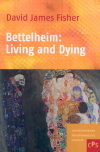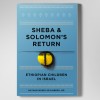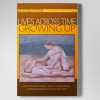Review of 100 Years of the IPA, Edited by Peter Loewenberg and Nellie L. Thompson (Karnac/IPA books, 2011)
This book’s a must-have, gotta-read, for your bookshelf at least for psychoanalysts or historians of ideas or New Yorker readers and fans of Janet Malcolm.
Loewenberg and Thompson are two scholarly historians and psychoanalysts. After four years of recruiting, writing, editing with 56 contributors from 41 countries and societies, this book could have been a hodge-podge. It isn’t; Loewenberg and Thompson pull it off. Their angle is to grab by the horns Derrida’s derisive bull — that there is practically no “homo psychoanalyticus” in Africa, Asia or the South Seas — and rassle it to the ground by studying the history of psychoanalytic geography, the variations with culture (or consistencies across cultures). And, in this book, they answer Derrida resoundingly that we now have the birth of a fourth region of psychoanalysis — Asia. Derrida criticized psychoanalysis as Eurocentric — the chapters on China, Japan, India and, yes, Israel and Turkey, among others, speak loudly for the autonomy that our colleagues there have earned. I will speak more about this at the end.
How to review a 560 page tome? Rather than a blow-by-blow (or chapter-by-chapter) rumble in the jungle, we can give an overview and then focus on the six histories by IPA leaders of their respective terms. These histories speak in the voices of their writers, most are former IPA presidents, and gives a sense of the shifts in timbre, pitch, theme and variations of each term in office.
Part I is Europe, beginning with three histories of the Vienna Society. The Shoah cleaned the slate in Europe, wiped out many analysts and wiped away others, 90 % to the US and others to England or South America. Andre’ Green said, (personal communication, 2004) that one cannot understand French analysis without understanding that because most French analysts were eliminated by the Nazis and Vichy, including Lacan’s analyst, Lowenstein, early French analysis was based on reading texts (not on clinical exposure to senior clinicians). This close textual reading was for better — witness LaPlanche and Pontalis magisterial dictionary of psychoanalysis — and worse — the alienating word play of some of Lacan’s prestidigitations. We continue through Germany (with a masterful, painfully honest chapter by Werner Bohleber) through northern and southern Europe and a big shout-out to United Kingdom.
Part II is North America — Canada and the US.
Part III we head South to Latin America (with four chapters on Mexico alone).
Part IV is Asia and Oceania, those lands the Derrida said were devoid of this reflective “species.” In here also is stuck Israel (by Rolnik, an historian and analyst), which I believe is far more akin to Europe than any Asia (even the Middle East, which has no significant psychoanalytic presence other than Israel and Turkey).
Part V is the international survey.
Let’s dwell on Part VI, IPA leadership, written by Rangell (1969-1973), Wallerstein (1985-9), Etchegoyen and Etchegoyen (1993-7), Kernberg and Tyson (1997-200) Widlocher (2001-5) and Laks Eizirik (2005-9). Geographically, we take off from LA, and in the next forty years, pass through San Francisco, Mexico, New York, Paris and land in Brazil (but not Rio).
Moving at a slower pace through these six chapters give us a sense of how different authors flavor the history of their era and their historical challenges. I will try to capture their voices, as well as summarize their thoughts.
Rangell recounts his history focusing on the sites of the meetings and major shifts in psychoanalytic ideas. The Vienna Congress (’69) was historical for being held in Vienna since the War. Rome (‘71) coincided with the rise of self-psychology (after Rangell defeated Kohut for the IPA presidency) and the Kleinian shift to LA. He adds details of Anna Freud’s disenchantment with the IPA (and Rangell, apparently) when she could not get the Hampsted training recognized beyond a Study Group culminating in the Paris meeting (’73) and the 1975 raucous debate between Andre Green — emphasizing the shift of theory to account for severe character disorders — and Rangell, who pressed to integrate new data into evolving Freudian theory.
Wallerstein’s major achievement (1985-9) he captures in his subtitle, “organizational unity maintained.” Wallerstein, born in and a refugee from Germany like one of his heroes, Senator Robert Wagner, from New York. Like Wagner, he wanted to make a political contribution to leading an organization deeply meaningful to him. “The suit” marked his tenure, the legal incorporation of “lay analysts” into the IPA, finalized in 1988. Wallerstein recounts the history of this conflict from Freud’s 1910 “Wild Analysis”, published the same year as the Flexner Report in America recounted the dismal state of medical education and led to profound, systematic and carefully overseen reform of medical education. Differences over lay analysis grew between the IPA’s European (majority) and American (growing minority); this brewed over three decades, interrupted by WWII and emigration of many analysts to the US and elsewhere. In 1949, the IPA agreed that the American would have both complete control over training and geographical monopoly in the US. Settling the lawsuit (under the firm legal guidance of Joel Klein, later New York Mayor (2002-2013) Michael Bloomberg’s Superintendent of Education, radically changed this.
A test and demonstration of Wallerstein’s character came early in his IPA presidency: some IPA member expressed concern that Wallerstein, as a former president of the Am psa, might a serious conflict of interest visa vis the lawsuit. In response, Wallerstein resigned from all Am Psa committees and positions during his IPA tenure.
Beyond settling this acrimonious lawsuit, Wallerstein achieved three major objectives during his tenure: 1. equalization of IPA regions; 2. fostering research; 3. accepting theoretical pluralism. And yet, in the face of such “pluralism,” Wallerstein challenged himself and others in the 1987 Montreal meeting. Inviting a Kleinian (Michael Feldman), an ego psychologist (Anton Kris) and a Middle Group trained object relationist (Max Hernandez) to present cases from their perspectives, Wallersten was able to “trace out various clinical issues dealt with in comparable clinical fashion…”: he plotted their common ground.
R. Horacio Etchegoyen (1993-7) is next, writing with Laura Etchegoyen, begins as follows: “We will set out how Horacio Etchegoyen conceives of the IPA…” and they continue, “Etchegoyen is a man of strong democratic convictions.” We learn his three achievements: transparency, while decreasing the IPA’s “interventionist” philosophy with societies, and addressing the issue of analysts involved in torture in South America.
Otto Kernberg (1997-2001) and coauthor Robert Tyson (Secretary) begin with seven challenges to the IPA and analysts:
1. the negative perception of psychoanalysis in general culture;
2. improving psychoanalysis relation to society (under Eizirik);
3. Research under the guidance of Fonagy and Wallerstein;
4. Treating patients with severe psychopathology;
5. Innovation in psychoanalytic education;
6. two major organizational IPA problems;
7. Issues in individual societies addressed to the IPA, such as ethical issues in the Rio de Janiero societies.
The rest of the chapter articulates year-by-year what was accomplished. It is straight forward and clear.
Widlocher writes of his tenure (2001-5) as the axis returns to Paris (since Lebovici’s tenure). He focuses on his efforts to promote “scientific politics” along with Sandler, Joffe, Blatt, Marianne Bohleber-Leuzinger and R. Sandell’s Stockholm group. He balanced the tension between empirical research and “reflective and historical studies.” Describing how “new” societies joined the IPA, he remarks, “”separation (of battling factions) is better than a permanent state of fighting.” With the opening of the Soviet Union and its sattelites, candidates from there trained either in Germany or Paris, resulting in dueling rivalries over training standards (reminiscent over experiences in China with Lacanian versus German versus American approaches in psychoanalytic psychotherapies). He writes about the development of analysis in the Middle East (not mentioning the Israel Society) and Far East. But, in his words, the “most important step taken by my administration” was denying some Latin American societies to approve thrice weekly analyses.
The chapter closes with Claudio Laks Eizirik’s (2005-9) account. Here’s an excerpt of his deeply personal final paragraph: “I was born, grew up, and undertook all my studies and analytic training in Porto Alegre, a lovely city in the south of Brazil…..I am at the same time a Brazilian and a Jew, a psychiatrist and a psychoanalyst, a clinician and a researcher, a medical doctor and a lover of the arts.. an inhabitant of my country but often feeling at home in so many different places.”
But, the book doesn’t end here. Look at the complete list of all the IPA congresses with presidencies and themes.
To return to psychoanalysis’s organically grown response to Derrida’s critique of Eurocentrism. Asia has come into its own intellectual strength and is growing further. Japan, Korea, China, Taiwan, Australia, India, Iran, Israel, Turkey, once nurtured by European (and American colleagues) now are prepared to stand as autonomous colleagues in the IPA. Currently, Japan, Korea, China, Taiwan are under North America’s aegis. We should be proud of their coming into their own. Under Wallerstein’s presidency, Latin America was recognized as the third region of psychoanalysis. Now, some three decades later, we witness the birth of a fourth region. Hopefully, this book documents why the IPA should recognize Asia as such, as an equal region in the IPA.
Read this book. Loewenberg and Thompson have organized an historical and geographical view of our living discipline that brings pride to psychoanalysts.
PS. Hot Tip! Big discount to IPA m





